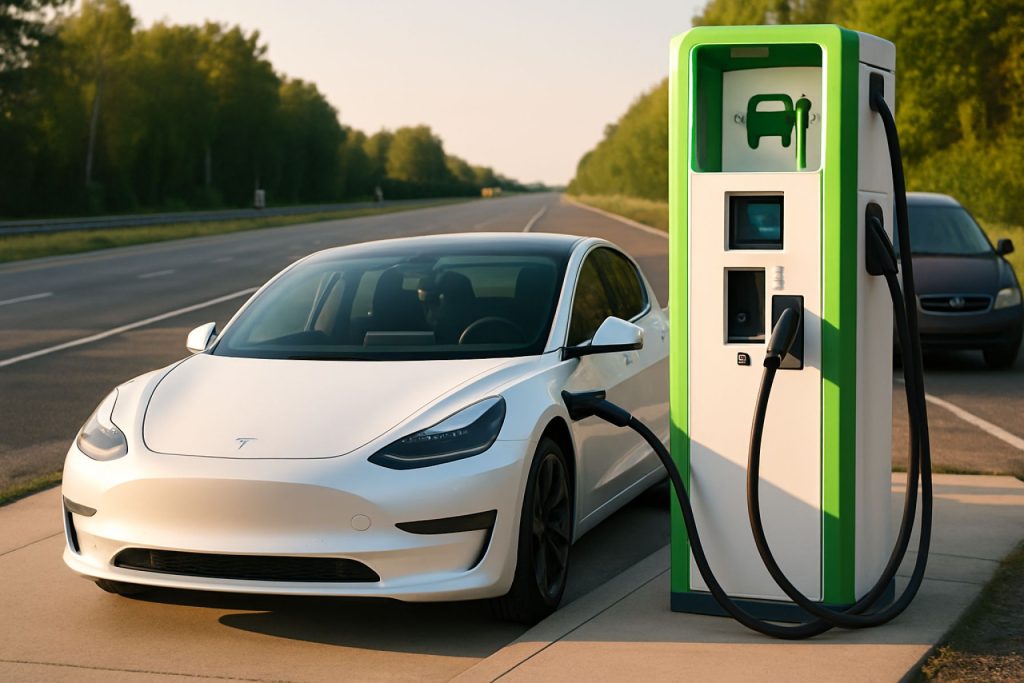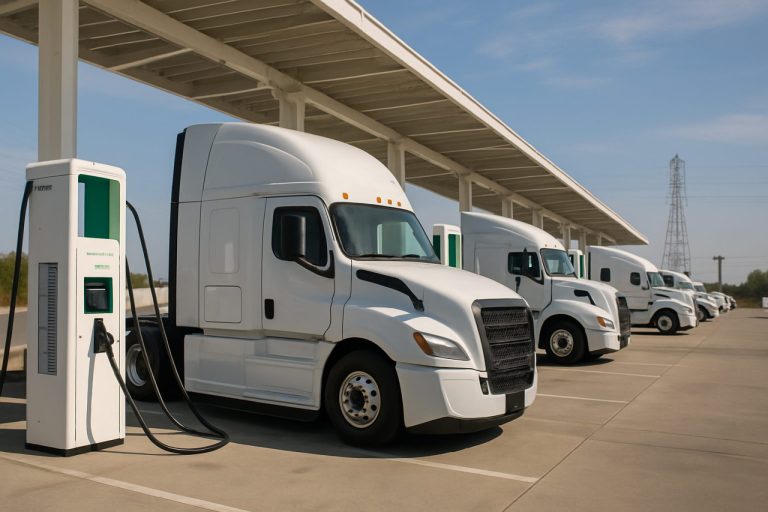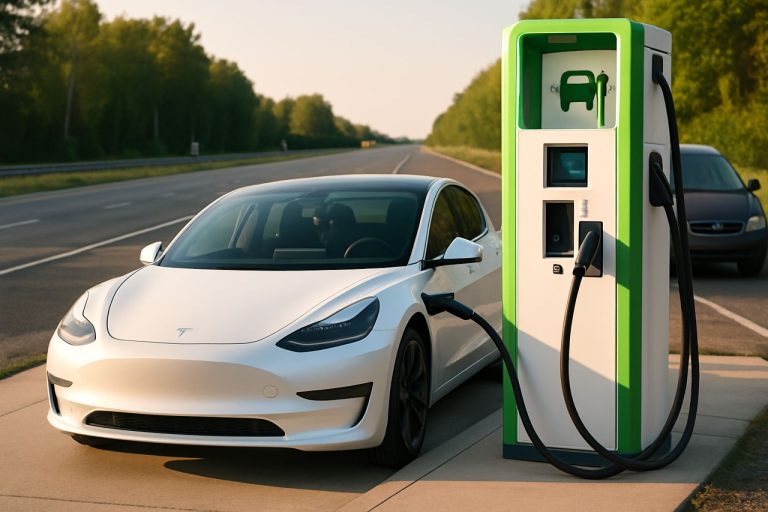
- America faces a rapid surge in electric vehicle (EV) adoption, with over 192,000 public charging ports and ambitious plans for 500,000 by 2026.
- Strong EV charging infrastructure depends on charger power, geographic coverage, adoption rates, and EV-to-charger accessibility.
- States like Delaware, Massachusetts, and Vermont lead the way due to proactive incentives and widespread charger networks, while Alaska and Idaho lag behind.
- Generous state rebates—sometimes up to $10,000—are available, with over half the country offering incentives for home charger installation.
- “Charging deserts” still threaten rural and low-income drivers, highlighting the need for more inclusive infrastructure development.
- Continued investment, smart policy, and innovative programs are crucial to ensure that all communities benefit from the EV revolution.
Across the American landscape, a new kind of fuel pumps flicker to life—some glowing steadily, others mere pinpricks on a vast map. The surge in electric vehicle (EV) popularity has triggered a nationwide scramble to build the charging networks these cars demand. Yet, beneath the surface of rising EV adoption, a sharp divide emerges: which states are paving the way for an electrified future, and which risk being left behind in the rearview mirror?
America’s Charging Crossroads
Step onto the streets of Delaware and the Washington, DC area and you’ll spot a subtle transformation. Sleek charging stations sit in line with parking meters, mall entrances, and downtown curbs—unexpected beacons of the evolving mobility revolution. As of this year, the United States boasts more than 192,000 public charging ports, with another thousand coming online each week. The pace impresses, but the grand vision—500,000 chargers by 2026—remains elusive.
Many experts, including analysts from the Department of Transportation, stress that infrastructure must leap forward to match the anticipated tidal wave of affordable EVs streaming in from innovators like BYD. The National Renewable Energy Laboratory now forecasts a need for two million public chargers by 2030.
Decoding the ‘Best’ and ‘Worst’ States
To make sense of the patchwork, researchers at HERE Technologies and SBD Automotive built a novel scorecard—the EV Index. Their formula spotlights not just the number of chargers, but their quality, location, and ease of access. Key metrics include:
- Charger Power: High-wattage stations cut waiting times, making EVs more practical for daily life.
- Coverage: A true EV ecosystem spreads charging points across highways and rural routes, not just in city centers.
- Adoption: A higher share of EVs signals a culture ready for transformation.
- Accessibility: A balanced ratio of EVs to chargers means drivers can plan trips without anxiety.
Champions and Challengers
Overlay the data, and the leaders emerge. Delaware, with a score near 80, sets the national pace thanks to progressive policy and practical incentives. The Northeast claims several top spots—Massachusetts, Connecticut, New York, and New Jersey—bolstered by robust rebate programs and dense charger networks. Vermont’s investment in rural charging infrastructure proves that even smaller states can spark big changes.
On the other end of the spectrum, states like Alaska, Arkansas, and Idaho languish near the bottom of the index. Harsh winters, sprawling distances, and limited state-sponsored incentives hobble their EV transitions. Alaska stands as an outlier—few incentives, vast terrain, and an infrastructure map barely dotted with chargers.
The Rebates that Drive Change
Policies matter. In states like Washington, DC, drivers can tap into tax credits covering half the cost of a Level 2 charger, with up to $10,000 back in their pockets. New York’s carefully layered programs—targeting everything from city buildings to rural homeowners—form a mosaic of support.
Nationally, over half of states now offer rebates for residential charging setups. The average American homeowner can access incentives around $500, a number that climbs dramatically in aggressive states or communities seeking to lead the electric transition.
The Road Ahead
The story is not only about infrastructure; it’s about who gets left behind as the car industry pivots. While the current growth in public charging stations is encouraging, many rural and low-income areas remain “charging deserts,” at risk of being stranded on the EV journey. The arrival of inexpensive EVs from global giants—especially as Chinese automakers eye the American market—could dramatically boost demand overnight.
Continued investment is vital: streamlined permitting, generous incentives, and smart policy will determine whether Americans from coast to heartland can adopt EVs with confidence. The true test for states is not just how many chargers dot their maps, but whether these connections enable every driver to go electric—without hesitation, and with the freedom to roam.
The Takeaway: America’s EV revolution isn’t just about who plugs in the most chargers—it’s about who forges an inclusive, accessible network that closes the gap between dream and reality. Fast lanes await, but only for those willing to invest, innovate, and ignite the journey.
For more on the evolving world of transportation and infrastructure, visit the Department of Transportation’s home page at www.transportation.gov.
Shocking Truths Behind America’s EV Charging Boom: Who’s Really Winning the Electric Race?
Beyond the Headlines: Untold Facts About the EV Charging Revolution
The race to electrify American transportation is heating up, but the headline numbers only tell part of the story. While public attention focuses on the remarkable growth in electric vehicle (EV) charging stations, there are critical nuances, challenges, and opportunities that deserve closer attention. Leveraging data from reputable sources like the Department of Transportation and the National Renewable Energy Laboratory, this article digs deeper—adding fresh insight, real-life guidance, and market trends for EV enthusiasts, policymakers, and everyday drivers.
—
Deep Dive: Extra Facts Not Covered in Most Reports
1. Types of EV Chargers Matter—Fast Chargers Are Still Rare
– As of 2024, <5% of U.S. public charging ports are DC Fast Chargers (Level 3), essential for road trips and quick top-offs, while the majority are slower Level 2 units. According to Department of Energy data, the average DC fast charge session takes 20–40 minutes versus hours for Level 2 ([source](https://www.transportation.gov)).
– Tesla Superchargers remain proprietary to Tesla vehicles, limiting cross-brand access, although some stations are now opening to other brands.
2. Pricing & Payment Transparency Remain Inconsistent
– Unlike gas stations, much of the U.S. lacks clear, upfront pricing for public charging, creating “range and wallet anxiety.”
– Some charging networks require multiple apps and memberships, causing confusion. Industry giants like Electrify America and ChargePoint are working to streamline payments with tap-and-go solutions, but national standardization is still lacking ([source](https://chargepoint.com)).
3. Home Charging—The Real Game Changer
– Over 80% of EV owners primarily charge at home, according to the DOE. The typical cost to install a Level 2 home charger ranges from $500 to $2,500 before incentives.
– Smart home charging systems can now schedule charging for off-peak electricity rates, slashing bills up to 30% in some utility regions.
4. Impact on Power Grids and Renewable Integration
– Mass EV adoption could increase peak electricity demand by 9–25% by 2030, requiring substantial grid upgrades, especially in fast-growing states (NREL forecast).
– Smart charging and vehicle-to-grid (V2G) technologies allow EVs to return power to the grid, stabilizing supply during peak demand—a futuristic benefit that’s already being piloted in California.
5. Big Automakers and Tech Giants Are Stepping In
– Ford, GM, and Hyundai have committed billions to expand both manufacturing and public charging infrastructure, frequently partnering with tech companies for software, monitoring, and payment integration.
– Google Maps and Apple Maps now integrate EV route planning, showing real-time charger status, power level, and connector type.
—
How-Tos & Life Hacks for EV Owners and Shoppers
1. How to Find the Best Charging Spots
1. Download apps like PlugShare or A Better Routeplanner to find real-time charger availability and reviews.
2. Check whether your route is covered by fast chargers, especially on interstate trips.
3. Filter for “verified charging stations” to avoid downtime due to broken or offline units.
2. Maximizing Charging Incentives
– Check local utility and state websites for rebates on home chargers—some offer free equipment or reimburse installation costs.
– Look out for additional tax credits—federal credits (up to $1,000 for hardware) may stack with state-level benefits.
3. Road Trip Tips
– Pre-condition your EV’s battery in cold weather to cut charging times.
– Plan overnight stays at hotels with destination charging.
– Use high-power DC fast chargers sparingly to optimize battery life.
—
Real-World Use Cases
– Urban vs. Rural Divide: NYC boasts dense curbside chargers, while rural Kansas has gaps exceeding 75 miles between fast-charging stations.
– Fleet Electrification: Companies like Amazon and UPS are deploying private charging depots for their delivery EVs, which may eventually open for public use.
—
Market Trends, Predictions, and Industry Forecasts
– Global EV Competition: Chinese automakers, like BYD, are targeting U.S. entry with affordable models. A surge in demand from cheaper imports could strain existing infrastructure within 2–3 years.
– Forecasts: NREL expects the U.S. EV fleet to exceed 30 million vehicles by 2030, necessitating over 2 million public charging ports.
– Public-Private Partnerships: Federal and state grants are driving rapid network buildout; by 2026, $7.5 billion is allocated for highway corridor chargers through the Bipartisan Infrastructure Law.
—
Reviews & Comparisons—Major U.S. Charging Networks (2024)
| Network | Coverage | Fast Charging | App/Payment Ease | Pricing (avg/kWh) |
|————————|——————|—————–|——————–|——————-|
| Tesla Supercharger | Nationwide | Yes (250kW+) | Excellent (Tesla) | $0.28–$0.35 |
| Electrify America | Coast-to-coast | Yes (150–350kW) | Good | $0.31–$0.43 |
| ChargePoint | Widespread | Limited | Very Good | $0.18–$0.39 |
| EVgo | Urban-focused | Yes (50–350kW) | Decent | $0.25–$0.40 |
—
Pros & Cons Overview
Pros:
– Rapid network expansion in leading states.
– Substantial public incentives for chargers and EVs.
– Lower fueling and maintenance costs for drivers.
Cons:
– Severe “charging deserts” in rural/interior states.
– Lack of unified payment/pricing system.
– Ongoing grid and supply-chain bottlenecks.
—
Controversies & Limitations
– Equity Issues: Low-income and rural populations are least likely to benefit from current networks and rebates, exacerbating mobility gaps ([Consumer Reports](https://www.consumerreports.org)).
– Charger Reliability: Studies show up to 20% of public chargers may be unavailable or out of service at any given time in some cities.
– Cybersecurity Concerns: EV chargers connected to networks can pose hacking targets, making robust cybersecurity protocols essential.
—
Security & Sustainability
– Leading networks are adopting encryption and multi-factor authentication to deter tampering and protect user data.
– Many public stations now run on renewable energy, with some states mandating solar or wind-powered chargers to cut carbon emissions.
—
Frequently Asked Questions
Q: Are all EVs compatible with all chargers?
A: Most modern EVs use the CCS standard, but Nissan Leaf still relies on CHAdeMO, and Tesla uses a proprietary connector (with adapters available). Always confirm compatibility before trips.
Q: Can my condo/apartment get a charger?
A: Many local governments are introducing “right-to-charge” laws requiring landlords/HOAs to permit charger installs if power supply allows.
Q: Is home charging enough if I live in a city?
A: Urban EV owners might rely more on workplace or public charging if home options are unavailable, making plug accessibility a key buying consideration.
—
Actionable Tips for EV Success
1. Always plan routes using current charger locator apps and check real-time status before departure.
2. Apply for all possible rebates and tax incentives; deadlines change as budgets get used up.
3. Ask your utility about off-peak rates—charging overnight can save money and support grid stability.
4. Join local EV owner groups to share tips, coordinate charging, and stay updated on new incentives.
5. Advocate for more charging options in your workplace, rental community, or town council meetings.
—
The Bottom Line
America’s EV revolution is accelerating—but it’s uneven, with coastal and urban states sprinting ahead while others risk being left behind. The winners will be those who blend cutting-edge infrastructure, inclusive policies, and a relentless focus on reliability and accessibility. For deeper resources on EV policy and infrastructure, see the official pages at the Department of Transportation and National Renewable Energy Laboratory.
Don’t get stuck in the slow lane—use these insights to power your own green transition and stay ahead of the crowd.



